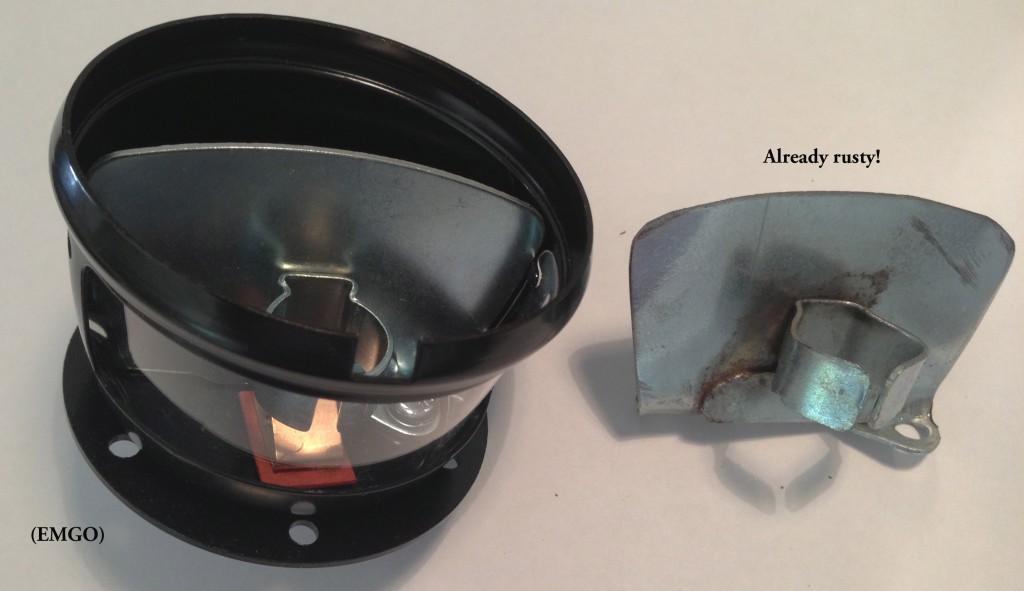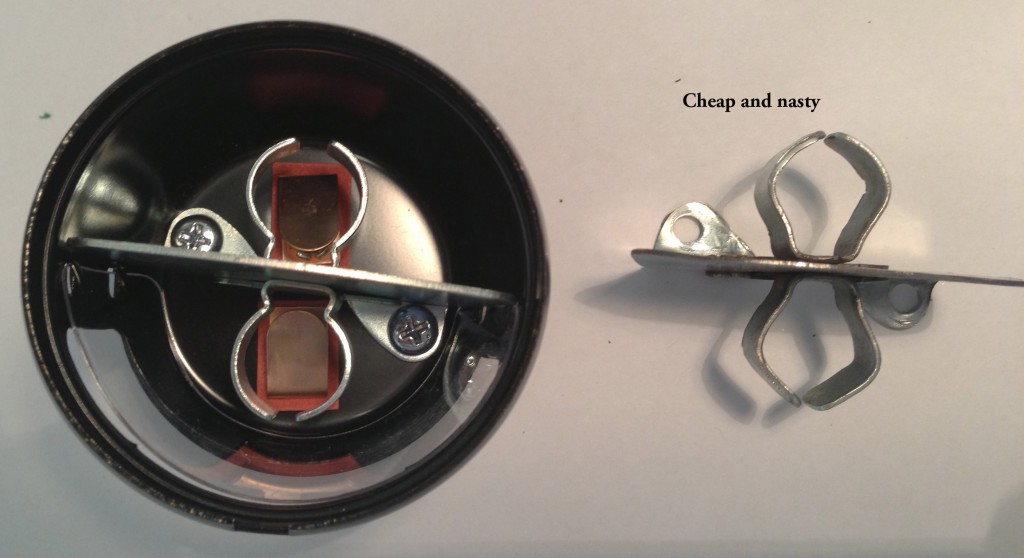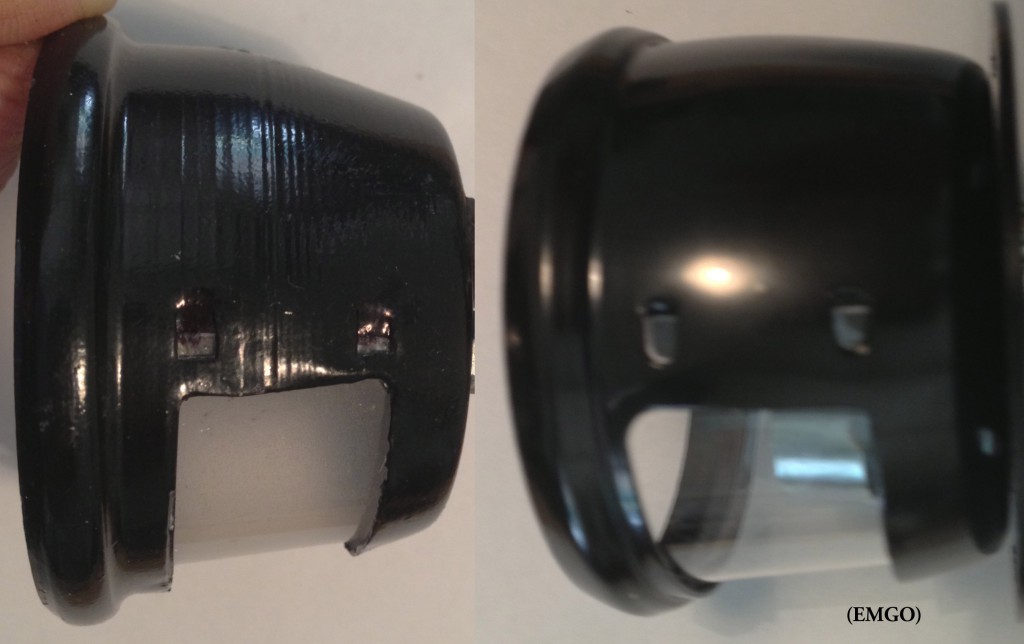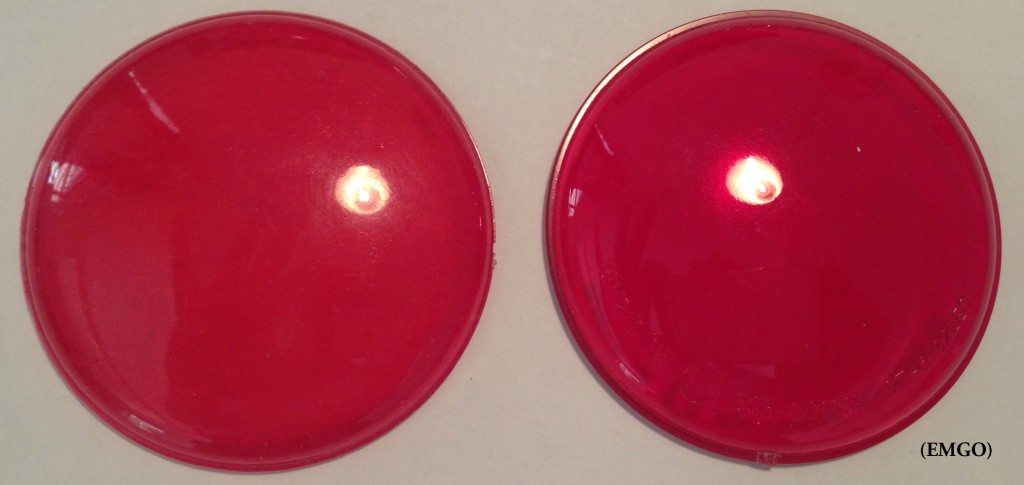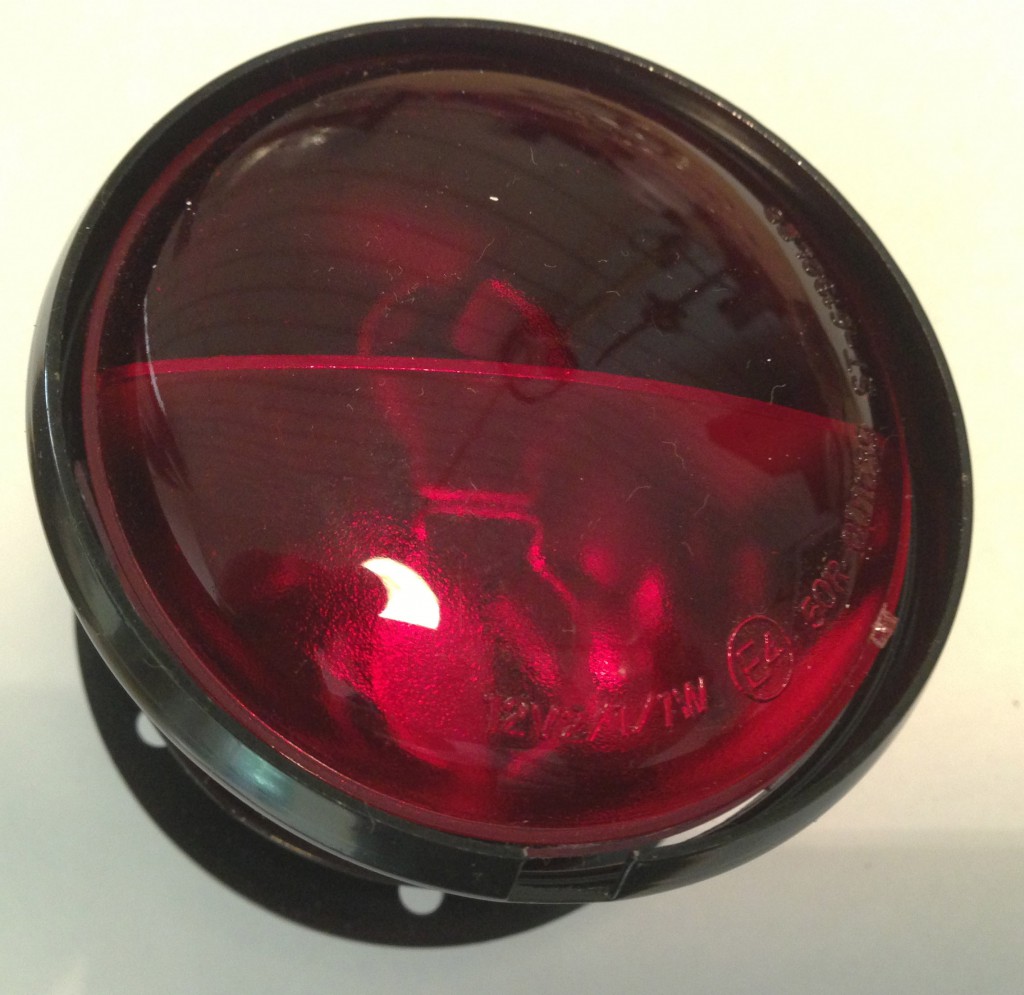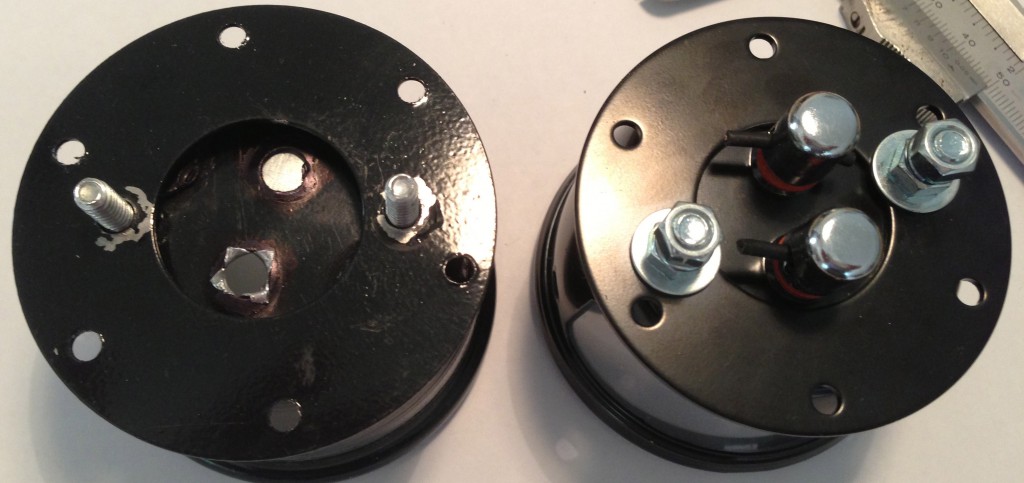A Much Better Rear Light – From Taiwan
Not that anyone would (not) notice the difference in the quality of these two parts, without me saying anything about them, but here goes anyway!! Unless you see them side-by-side, how would you know?
The one on the right, needless to say, is the one of Indian ‘manufacture’ and the one on the left, from Taiwan, made by the EMGO consortium, bought on eBay from brit_am_nos13 in Australia, who has a selection of parts for British motorcycles in general.
To the parts themselves… the EMGO part is much heavier (beware, you racers!), being of heavier gauge metal throughout. Still with the strange (but as on the ‘Vincent’ original) dividing wall between ‘Stop’ and tail light – this might have been or still be the practice with Automobiles of late, but with Classic British bikes? As far as I remember, any of the bikes that I have serviced or owned, if they had a brake light at all, had twin-filament bulbs with a 6W/21W setup (or similar). Can’t think of ONE that had separate ‘chambers’ for each bulb… Someone please correct me. I can only assume that the twin-filament bulbs were not as available then (if at all!) and that the lamp would have had to be ‘deeper’ to accommodate one can be seen from the pictures.
Nonetheless, the quality of the material and finish is obvious even at a cursory glance, and the workmanship difference stands out a mile! You really do get what you pay for in this instance, so it might be advisable to ask for this product by name, before investing hard-earned pennies in a piece of cr*p.
Look at the difference of finish on the two dividers…one is already rusty through the galv. and the other has a consistent, even finish. Look also at the shape of the bulb-holders:
The inside finish is plain to see, the EMGO one is powder-coated. The ‘other’ one had been done out of a spray can and the paint is coming off all over the place…
Only subtle differences in the working of the metal over the tool, too, the EMGO being a lot crisper at the ‘glass’ end and altogether cleaner and smoother.
No prizes for guessing which one I would fit to my machine.. EMGO’s real metal one or the plastic… While the difference may not be quite as obvious at first glance in the photo from the ‘front’, so to speak, however, the inside view is certainly more obvious:
The lens is similar, but not so easy to show on photos…The lens is much more glass-like (i.e. more transparent) on the EMGO, so actually transmits more light to the following traffic, presumably a plus for visibility (even if it is only out of half the lens…) Interestingly enough, the bulbs supplied with the EMGO are both 10W, so ‘only’ 10 + 10, instead of 6 +21 when the brake is on… Roundabouts and swings, as the running light is brighter than the dual filament and with the brake on not so bright. Since I drive with the brake OFF most of the time… HOWEVER, I don’t really want anyone driving up my ‘exhaust pipe’ when I do apply the brakes coz they didn’t notice…
One other comment about the EMGO lens: It comes with what looks like an E4 certification, but the numbers don’t add up, so I doubt if it is actually ‘real’, since why would anyone go to the trouble of getting the certification, and then ‘misprint’ the data on their tooling for the lens…?? All made up just to look good. The raised writing of the ‘certification’ has /LED at the end, so is presumably, if at all, only valid in that configuration.
The size of the bulbs is restricted inside the housing (as seen on my first blog regarding the lamps)… which is why I’ll be converting to the ‘festoon’ type of bulb anyway, when I get back to my lathe. This will give me more choice, as the 21W would definitely be too close to the lens for my liking, as is the 10W running light, not forgetting that the ambient temperature here in the summer is well up in the late twenties and more, up to nearly 40˚, if you are a mad dog or Englishman… and go out in the noonday sun! This will also mean that I can get rid of the silly wall between the bulbs (which was only a hasty expedience at the time, to give something to mount the two bulbs on, when originally only one was fitted in the middle of the light). Incidentally, for those rivet-counters with sharp eyes, the original Miller items for the Vincent can be spotted easily even without the lens etc, even if they don’t have the Miller ‘lighthouse’ (post ’55?)! The pattern ones have the copper-coloured spring going from side-to-side, unlike the up/down-pointing ones seen in the repros as above!! Also note that on the originals, the dividing wall was nearly always horizontal, which the repros definitely are not! (check out the second picture above closely and you will notice it…)
The electrical-connecting buttons on the back of Indian item (removed in this picture) were already rusted and the chrome was coming off…I threw them away before I thought of photographing them, but here the difference in the paint-finish is quite obvious.
So much for that!
For anyone interested, I am having the tooling done to make the Velocette ‘Star’ pressing in stainless-steel, which will then be polished to a mirror-sheen, since these have not been available for a long time.
© peter gouws 2012

